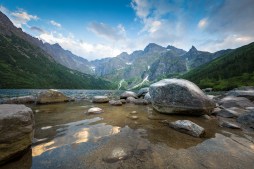From Mountains to Rivers: The Rich Histories of Notable Natural Landmarks
Natural landmarks have captivated the human imagination for centuries, boasting stunning beauty and rich histories that reflect the cultures and events that shaped their existence. From majestic mountains to winding rivers, these formations tell stories of the earth’s geological past, human exploration, and cultural significance. In this article, we will explore some of the most famous natural landmarks around the world and delve into their fascinating histories.
The Grand Canyon: A Geological Marvel
The Grand Canyon in Arizona is one of the most famous natural landmarks in the world. Carved by the Colorado River over millions of years, it showcases a vibrant palette of colors and geological layers. The canyon spans 277 miles and reaches depths of over a mile. Native American tribes like the Havasupai have inhabited its rims for thousands of years, creating rich cultural traditions tied to this breathtaking landscape. European explorers first documented it in 1540 when García López de Cárdenas led an expedition there; it has since become a symbol of natural beauty in America.

Mount Everest: The Roof of the World
Mount Everest stands as Earth’s highest peak at 29,029 feet above sea level. Located on the border between Nepal and Tibet, its indigenous name is Sagarmatha in Nepali and Chomolungma in Tibetan. Its history involves numerous expeditions dating back to ancient times when local folklore regarded it as sacred. The first successful ascent was achieved by Sir Edmund Hillary and Tenzing Norgay on May 29, 1953—and since then, it has become a sought-after destination for climbers worldwide despite its treacherous conditions.
Niagara Falls: Nature’s Thunderous Display
Straddling the border between Canada and the United States, Niagara Falls is renowned for its immense flow rate—the highest in North America—making it one of nature’s most powerful spectacles. The falls have been a significant historical site; they were revered by Native American tribes before becoming popularized by tourists in the 19th century. Today, they are not only an essential source for hydroelectric power but also symbolize romance and adventure with millions flocking each year to witness their splendor up close.
The Great Barrier Reef: A Vibrant Underwater World
As one of Earth’s largest coral reef systems off Australia’s coast, the Great Barrier Reef stretches over 1,400 miles long and comprises thousands of individual reefs and islands. It is recognized as a UNESCO World Heritage site due to its unparalleled biodiversity; however, its history dates back approximately 500 million years when much different environmental conditions prevailed on Earth. Despite challenges such as climate change threatening its ecosystem today, conservation efforts aim to protect this natural wonder’s legacy.
Machu Picchu: An Incan Treasure Amidst Nature
Perched high in Peru’s Andes Mountains lies Machu Picchu—a UNESCO World Heritage site often referred to as ‘The Lost City’ due to its remote location that remained undiscovered until Hiram Bingham brought it into public knowledge in 1911. Built during Inca civilization around AD 1450 amidst lush vegetation surrounded by striking mountain peaks reflects advanced agricultural techniques used at that time while providing insight into Andean culture through archaeological finds discovered there over decades since then.
These famous natural landmarks embody not only breathtaking beauty but also narratives woven through time—each telling unique tales about our planet’s geological wonders alongside mankind’s interactions with them throughout history. As we continue exploring these majestic sites across various regions globally may we gain deeper appreciation for preserving them so future generations can marvel at their grandeur just like we do today.
This text was generated using a large language model, and select text has been reviewed and moderated for purposes such as readability.


